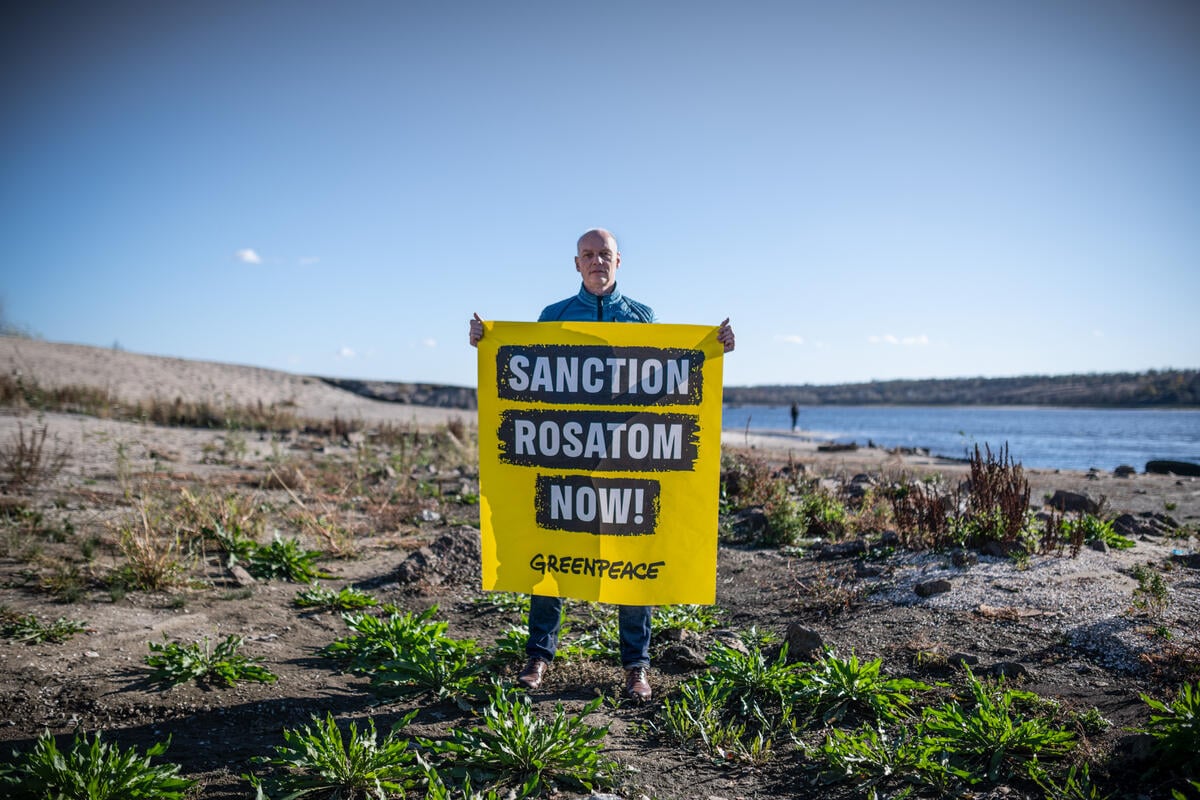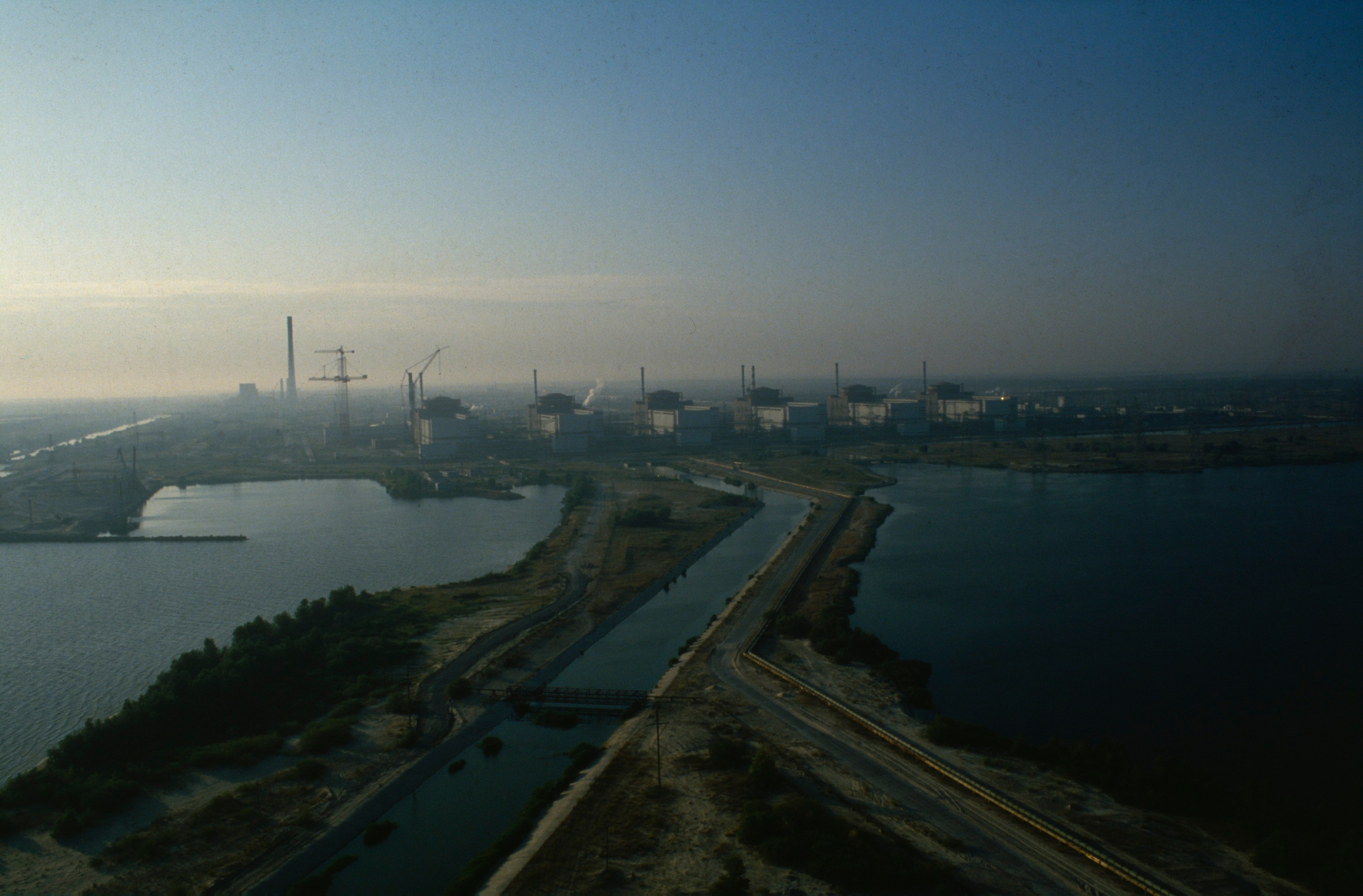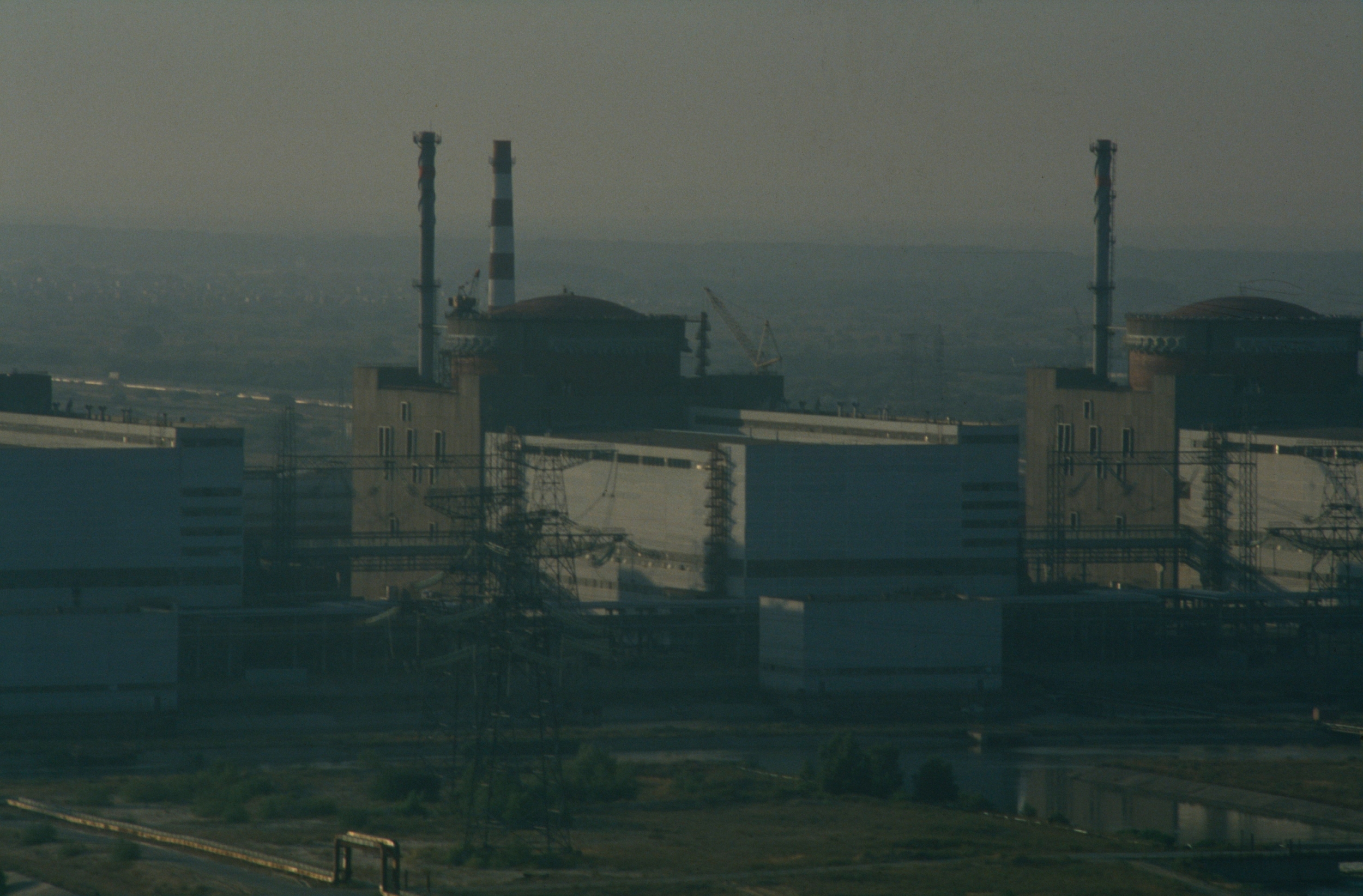Greenpeace Ukraine satellite imagery analysis
27 May 2025
Zaporizhzhia nuclear plant new electricity line under construction by Russian engineers inside temporary occupied Ukraine. Construction is on-going to the west of Berdyansk in Zaporizhzhia Oblast and to the north west of Mariupol, Donetsk Oblast.
Greenpeace Ukraine remote sensing satellite analysis has identified Russian engineering construction of an electricity high voltage power line for the Zaporizhzhia nuclear plant (ZNPP) in temporary occupied Zaporizhzhia Oblast and Donetsk Oblast of Ukraine. The visual identification of the construction of the electricity grid line is further confirmation of plans by the Russian state nuclear corporation, Rosatom, to restart the nuclear reactors at the ZNPP. Construction is ongoing with a total of 90km line and pylons installed as of 23 May 2025. The latest imagery shows that between 11 – 22 May 2025, 15 pylons and electricity line over 5km in length was constructed from the east of Topolyne, north of Mariupol, in Donetsk Oblast. Construction over the Kal’chyts’ke Reservoir is likely before end of May 2025.
The Greenpeace Ukraine analysis of high-resolution and lower resolution Planet imagery shows that between early February and 23rd May 2025, a total of 90km of electricity line pylons had been installed in Zaporizhzhia Oblast and Donetsk Oblast close to the Azov Sea. Imagery from before February 2025 shows no sign of construction. Based on the current location of on-going construction, we expect that the construction by Russia will continue approximately 100km to the west to the Ukrainian city of Melitopol in Zaporizhzhia Oblast where it will be connected to the 330 ultra-high voltage substation (330/150/35/10 kV). Construction to the east is with the aim to connect to a 750/330 kV substation to the north of Mariupol in Donetsk Oblast. For a distance of 90km electricity line it estimated that around 300 high voltage pylons/towers have been constructed. The electricity grid line construction is overseen by the Black Sea Regional Branch Dispatch office of the Russian occupiers branch of JSC SO UES. This is a specialized organization that carries out centralized operational dispatch control in the Unified Energy System of Russia. The ZNPP was attacked and illegally occupied by Russian armed forces on 4th March 2022; the reactors have not generated electricity since September 2022. In December 2024, Sergey Kiriyenko, First Deputy Chief of Staff of the Presidential Executive Office of the Russian Federation stated the intention to restart the reactors, ‘as fast as possible’. The aim of Russia is to connect the ZNPP reactors to the Russian grid in Rostov Oblast. The Russian government has prioritized restarting the ZNPP reactors, to be led by Rosatom. Greenpeace Ukraine has been campaigning since January 2024 to stop the restart, including the enabling role of the International Atomic Energy Agency (IAEA) in any Rosatom reactor restart.
This satellite image link here shows the western end of the electricity line to the west of the village of Azovske, Zaporizhzhia Oblast on the Sea of Azov between November 2024 and May 2025,; and this link here shows the latest imagery 11 – 22 May 2025, at the eastern end of the line near Topolyne, north of Mariupol, in Donetsk Oblast.
“This is some of the first hard evidence of Russian moving ahead with its dangerous and illegal plans for restarting Ukraine and Europe’s largest nuclear plant at Zaporizhzhia. But the plant is the sole property of Ukraine and this further step towards a potentially disastrous operation of the Zaporizhzhia nuclear reactors must be condemned. Russia and Rosatom must be stopped from its restart plans and the Zaporizhzhia nuclear plant must be de-occupied and returned to Ukraine,” said Shaun Burnie, nuclear specialist at Greenpeace Ukraine.
Image 1 – Satellite imagery of new electricity line being built by Russia in temporary occupied Ukraine
to connect the Zaporizhzhia nuclear plant to Rostov in Russia. Source : Planet/Greenpeace Ukraine
Image 2 – Satellite imagery from 7 May 2025 of new electricity line being built by Russia in temporary occupied Ukraine to connect the Zaporizhzhia nuclear plant to Rostov in Russia. This section of line – approximately 8km in length with 30 pylons – is close to the village of Azovske on the Sea of Azov in the district of Beryansk. Source : Planet/Greenpeace Ukraine
Image 3: High resolution Sky Sat image 15 April 2025 electricity pylon for new electricity line from ZNPP nuclear plant in temporary occupied Ukraine. Source : Planet/Greenpeace Ukraine
Image 4: Status of eastern construction at Topolyne, north of Mariupol, in Donetsk Oblast as of 11 May 2025.
Image 5: Status of eastern line as of 22 May showing additional 15 pylons and electricity line over 5km in length constructed since 11 May, east of Topolyne, north of Mariupol, in Donetsk Oblast.
CEO of Rosatom Alexey Likhachev at the Russian Federation Council, 21 May 2025 – Source: Russian Federation Council
On 21 May 2025, CEO of Rosatom Alexey Likhachev told the Russian Federation Council in Moscow, “Everyone is living the dream of raising the station. (…) We have developed a plan to bring the Zaporizhzhya NPP to full capacity. The plan is undergoing interdepartmental approvals from the regulators of the Ministry of Energy”. One of the main tasks Likhachev reported was, “replacing the power grid”. One 29 December 2024, Sergei Kiriyenko First Deputy Chief of Staff of the Presidential Executive Office of the Russian Federation visited the ZNPP reactor site to discuss “plans for the station’s development”. Congratulating ZNPP Rosatom employees, Kiriyenko, “expressed confidence that as soon as the situation allows, the Zaporizhzhia NPP will be reconnected to the energy system of our country and will make a significant contribution to the sustainable energy supply of Russia.” He called for preparations, “for the fastest possible launch of all six units of the station.”
The plans by Rosatom to restart one and eventually all reactors at the Zaporizhzhia are at very high risk of catastrophic failure. There are many obstacles to reaching the point where restart is even possible, including securing sufficient water supply. If those challenges are overcome, any reactor restarted is at multiple risk due to the more than three-year Russian occupation:
- Higher probability of equipment failure (more equipment in use)
- Higher probability of human error (more actions, less personnel and less experience, much shorter time margins to respond to emergencies)
- Only one external grid line, compared to current situation (two), no redundancy on the grid (the Ukraine and Russian grid system is not synchronized)
- An operational nuclear power plant requires significant amounts of power to maintain the cooling of the heat of the fuel in the spent fuel pools and the residual heat in the reactor cores after the shutdown of the reactor. Without the water circulation pumps functioning, the cooling water in the reactor core will boil out in a matter of hours and core damage will occur including fuel melt
- More significant offsite consequences – criticality of the reactors will immediately increase the short-lived radiological content of the reactor fuel including radioactive iodine
“It is impossible for Rosatom to meet nuclear safety guidelines in seeking to restart ZNPP. We have called on the IAEA Director General to make this explicitly clear to Rosatom and Russian government representatives in his upcoming meetings. The IAEA must stop signaling to the Russian government that there is any legitimate pathway for their restart of reactors at Zaporizhzhia. The IAEA must not in any way support preparations for Russia’s illegal restart of one or more nuclear reactors at Zaporizhzhia,” said Jan Vande Putte, nuclear expert at Greenpeace Ukraine.
For further information:



